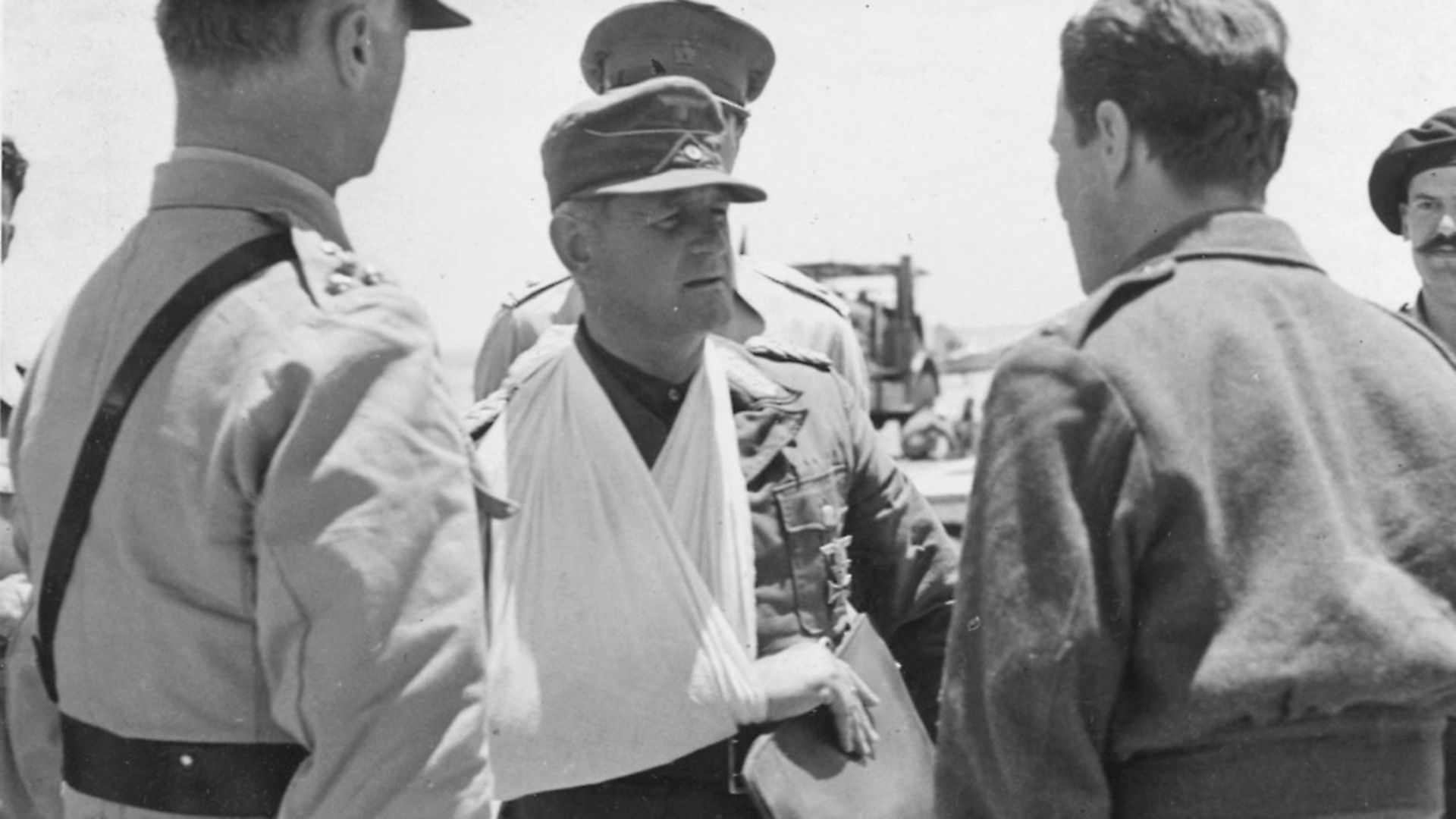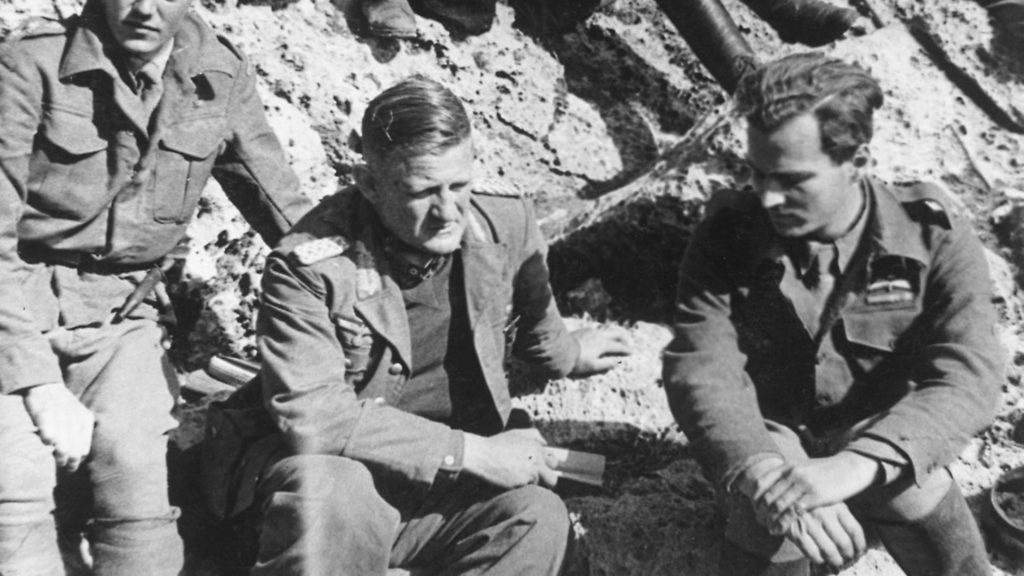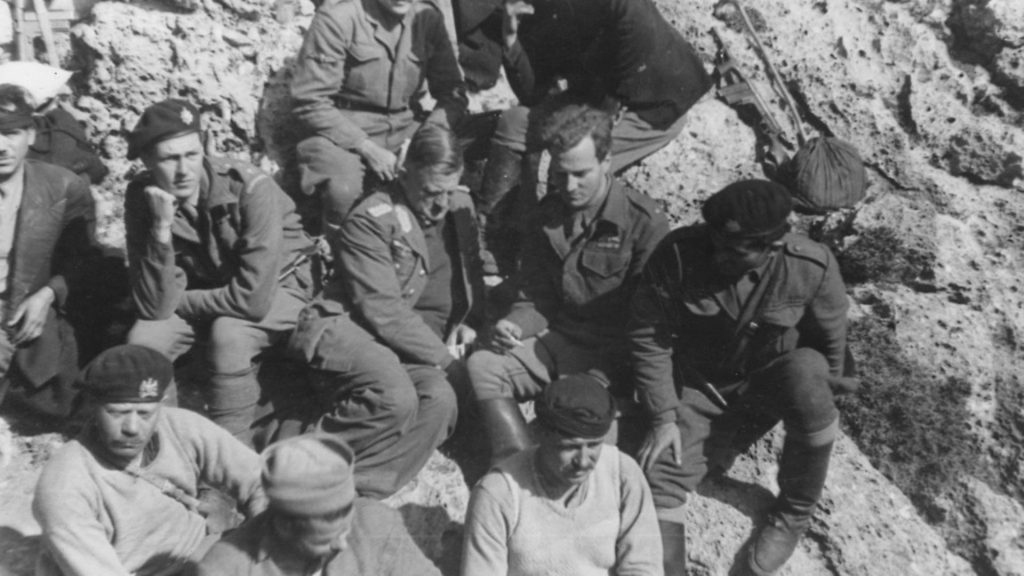
If Theresa May had made her ‘citizens of nowhere’ speech a few years earlier, she would probably have received a letter of stern rebuke marked Kardamyli, Greece.

Royalties from the sale of these photographs of William Stanley Moss will be used to support education in Crete. Premium collection – minimum fees may apply *** Local Caption *** PREMIUM COLLECTION – MINIMUM FEES APPLY – Credit: William Stanley Moss / TopFoto
The little village on the Ionian Sea was the adopted home of Patrick Leigh Fermor, the quintessentially English war hero and celebrated travel writer whose dashing exploits took place against an ever-changing backdrop of European towns and cities, from the moment he flunked out of formal education to hike through Europe in 1933 to his death in Gloucestershire in 2011.
Fermor, or Paddy as his countless and scattered friends called him, was the product of an age when Britain had earned a reputation for hardy troubadours for who the world outside their community was an object not of wariness, but of fascination.
In this spirit, Fermor mastered whichever language it served his purpose to learn. He was an intellectual magpie with an incurable curiosity for obscure cultural anomalies, once writing to fellow explorer Freya Stark that he longed to find out more about a recently extinct Greek enclave in Turkey, ‘especially the Lazi of Pontus and Caucasus and the Turkish-speaking (but Greek and Orthodox) Karamanlis of the interior’.
This thirst for knowledge and obsession with detail is what sets his travel writing apart. To wade through Fermor’s thickly wooded tangents is to expose yourself to a wealth of scholarship amassed over years of research, much of it initiated in smoky German taverns or convivial Greek caves before being consolidated in frenzied reading in the library of whichever grand house he happened to be squatting in at the time.

Royalties from the sale of these photographs of William Stanley Moss will be used to support education in Crete. Premium collection – minimum fees may apply *** Local Caption *** PREMIUM COLLECTION – MINIMUM FEES APPLY – Credit: �William Stanley Moss / TopFoto
In a duller life, the rakish Fermor might have been a celebrity don. His vast learning was accompanied by an original cast of mind that enabled him to speculate at length in the second of his two Greek books, Roumeli, about the origins of the Sarakatsán tribe. Whenever confronted with a ‘cloudy and unchronicled hinterland’, as he described the field of historical enquiry occupied by the nomadic shepherds, he could not leave it alone.
As that snippet suggests, he also had a rare gift for elucidating shadowy subjects for the layman at his knee. Even his disciples would concede that his heavily allusive, unrestrainedly metaphorical prose is not easily digestible, with any trace of Bill Bryson-esque levity conspicuous by its absence. But the reader’s patience is usually rewarded by descriptive tours de force unparalleled even by Henry James.
Looking back on his youthful self’s European odyssey decades later in A Time of Gifts, which ballooned from an essay on walking to the first in an epic trilogy of retrospectives, Fermor wrote: ‘Peering up at the Basilica, I can float inside and along the vistas of acanthus leaves and through the darkening criss-cross of mezzotint shading into the vast sacristy where the tiers of presses and the rows of treasure-chests have disgorged their silk and their brocade, all unfolded now.’
The basilica touched upon in this vintage Fermor passage is at Esztergom, the one-time capital of Hungary. When he arrived on Easter Sunday in 1934, crossing the Danube from Slovakia, the river bank was an explosion of colour and anticipation. Even then, the glinting scimitars and radiant bouquets were a throwback to a bygone age, with one pilgrim later offering him a lift in his Bugatti. Ultimately, what the wide-eyed Englishman saw would be the last breath of a way of life suffocated by the onrushing war and its aftermath.
As if to illustrate the importance of Fermor’s contribution in recording these events, Esztergom has since declined to a pale shadow of what it once was. I visited on a blustery, rain-lashed winter’s day, travelling from Budapest in a rickety bus that dropped us off almost apologetically in a leaking bus shelter full of the revellers’ hollow-eyed descendants. Squatting vastly on a walled mound above the town, the stone basilica where the country’s first king, Stephen, was crowned in 1000 AD looked an incongruous anachronism.
Europe was already becoming a different place while a 29-year-old Fermor was busy earning his spurs in the Cretan wilderness in the Second World War. One reason for this was the rise of Communism on the other side of the Iron Curtain, a development with grave material consequences for many of the people Fermor had encountered on his Great Trudge, as he dubbed his early European peregrinations.
Among them was Princess Balasha Cantacuzène, the beautiful Moldovan descendant of a fourteenth-century Romanian dynasty with its roots in Byzantine nobility. When Romania was swallowed by Soviet Russia, Balasha and her immediate family were dispossessed by the new regime, jailed for trying to escape the country, and then placed under years-long house arrest on meagre rations. Whereas the Habsburgs were forbidden to set foot inside Austria after the First World War, the Cantacuzènes were never allowed out of Romania again.
The lovers’ serendipitous meeting had been typical of the good fortune that would bless Fermor’s encounters for the duration of his adult life. As well as enjoying a fairytale romance, the teenage tearaway also relished the opportunity the Cantacuzènes’ book-lined country pile provided to fill the gaps left in his schooling. He had been expelled from The King’s School, Canterbury, for holding hands with the greengrocer’s daughter under the noses of the authorities.
Over decades of furious socialising, Fermor would raise the exploitation of others’ hospitality to a conscious art form. One temporary arrangement, he told Lawrence Durrell, was ‘the best bit of high-level cadging I’ve done for years, a real haul’. For a man capable of bumping into Vita Sackville-West’s brother-in-law in a remote corner of Dartmoor, this was no vainglorious boast.
Happily for one with his freeloading gifts, he was instinctively sympathetic to the claims of the aristocracy. Indeed, Balasha’s fate would merely have consolidated his romantic attachment to Europe’s ruling classes. This admiration was founded in part on the necessarily international constitution of the leading houses and the polyglot atmosphere in which they moved. Although his disdain for tribalism as a mindset stood in opposition to his fascination with its living protagonists, he particularly relished his new-found friends’ freedom and desire to understand their European neighbours through the medium of literature and philosophy. The fondness for allegory that characterises his letters stems from this source.
Access to high culture was not the only draw, however. Fermor held a profound respect for historical events that translated into reverence for anyone with a palpable connection to them. As well as explaining his glee at making the acquaintance of an old woman who Byron had known as a girl, this accounts for his self-indulgent excitement at borrowing an empty castle outside Rome during one of his writing retreats in 1959. ‘When the Black Castellan of Passerano displays his gonfalon from the battlements, the peasants of the valley can hide their cattle and douse their lights and bolt up their dear ones!’ he wrote to his long-suffering editor, Jock Murray. The final downfall of feudal society after 1945 had evidently invested its vanished rulers with tragic glamour.
Fermor’s understanding of the evolving European story was coloured by his interpretation of its religious conflicts. Though far from a latter-day crusader, he saw the Ottoman sacking of Constantinople in 1453 as an unwarranted attack on Christian civilisation. Much as Günter Grass insisted on calling his hometown of Danzig by its original Polish name, Fermor stubbornly refused to adopt the name Istanbul when referring to the former capital of the Byzantine Empire. In fact, it is hard to ignore a note of wistfulness in his evocations of the Byzantine resistance. ‘Surely they were heirlooms of the Turkish wars?’ he wonders at the sight of the ceremonial blades at the service in Esztergom, adding that ‘in old battles across the puszta, blades like these sent the Turks’ heads spinning at full gallop’.
These bellicose musings were not those of an armchair soldier. Early in the war, Fermor had been spotted by the Intelligence Corps during a spell of convalescence that interrupted training with the Irish Guards, eventually joining the Special Operations Executive, based in Egypt. From there, the swashbuckling philhellene was billeted to Nazi-occupied Crete, with instructions to stoke up resistance among the Cretans. He disembarked in the summer of 1942 on an island so firmly under German control that it was known as Festung Kreta, or Fortress Crete.
Once there, Fermor took to the mountains, disguising himself as a native shepherd. The deception was aided both by his runaway beard and by his tendency to cavort drunkenly outside tavernas with complicit Cretan peasants. All the while, he was living in damp caves and forging unbreakable bonds with his oppressed neighbours. In 1944, it was these sincerely nurtured connections that enabled Major Leigh Fermor and his makeshift battalion to perform an act of derring-do that might have been torn out of the Boy’s Own Annual.
Seeking to deal a blow to German morale and give a shot in the arm to the native population, Fermor and his brother-in-arms Billy Moss, both in German uniform, ambushed the car of the German High Command as it trundled home one June evening, knocking out the driver and bundling the freshly appointed General into the back. The vehicle’s subsequent passage through a series of German sentry posts was negotiated with outward serenity, while a stunned General Kreipe begged to know of the whereabouts of his cap from the back seat he was sharing with a dagger-wielding Cretan patriot.
Before melting into the sierras with their bounty, Fermor and his men hilariously – though with tragically little success – sought to clear the islanders of any blame by planting Player’s cigarette butts and an Agatha Christie paperback on the floor of the abandoned car. The broad shoulders of Britain, by now in the ascendancy in the larger war, were supposed to bear the consequences.
For all that these details appear to fit the ‘Tommy sticks it to the Bosch’ narrative cultivated in the 1957 film Ill Met By Moonlight starring Dirk Bogarde, the escapade is best remembered for a moment of improbable communion between captor and captive. Midway through the abduction party’s flight across the island, they took shelter in a lofty cave in sight of Mount Ida. As dawn broke over the snowy scene, Kreipe suddenly intoned the opening line of Horace’s ode to Monte Soratte. The auto-didact Fermor duly recited the rest of the poem. ‘For five minutes,’ he writes in Abducting a General, ‘the war had evaporated without a trace’.
It would return with a vengeance in August of that year, when German troops torched a series of mountain villages in the Amari province in apparent retaliation, killing 450 men, women and children. But Fermor’s messianic reputation on the island endured, with his array of honorary Cretan family even swelling in 1975 to include the son of a comrade Fermor had accidentally shot dead a year before the Kreipe operation. The bereaved shepherd set aside the blood feud he had sworn against Fermor years ago to ask him to be his daughter’s godfather, making the two men koumbari [godbrothers] in a move of profound symbolism within Greek communities. Fermor, known affectionately in the region as Mihali, named the girl after his unintended victim.
The peripatetic Fermor’s work ethic, which led him to withdraw on several occasions in the 1950s to monasteries in the north of France to write, sometimes harked back to that of sleepless Classical archaeologist and fellow philhellene Johann Joachim Winckelmann. But even after the construction from scratch in 1969 of the house in the Mani peninsula where he and his unfailingly tolerant wife Joan lived out the rest of their days, his hopeless inability to meet deadlines still dogged him. The fact that the last of the European trilogy was lashed together posthumously from a combination of diary entries and his copious correspondence was somehow a fitting tribute to a man of action who always had too much to say.
The BBc called him: ‘A cross between Indiana Jones, James Bond and Graham Greene.’
A product of another age.
Jack Arscott is a freelance journalist and Europhile blogger.









